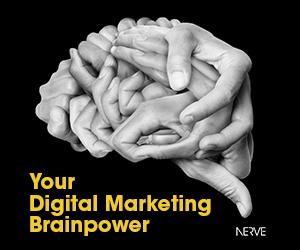As companies are shifting their business online, their websites will function as a primary interface to make their services available and accessible to the target customers. With the help of a website, you can enable your audience to find you, read up about your brand, and answer a bunch of queries that they might have about your products or services. It can act as your company’s portfolio or resume. Hence, it will help add credibility to your business, enabling you to optimize your online presence and open opportunities for growth and revenue. A well-designed website can make a good impression on prospective customers and optimize your digital marketing efforts.
A high-quality website is neatly organized, easy to navigate, has a modern layout with compelling visuals and texts. It is functional, branded, motivates the visitors to convert better. Such websites are well-polished and are critical to your digital business. A robust website design helps form the right impression on your visitors and helps build authority and brand image. It functions as the virtual representation of your company and ultimately reflects your brand. When designing a website, the stakeholders must consider various vital principles to maximize its functionality and usability.
Creating an effective website design is a challenging process. Hence, you should consider incorporating the help of skilled professionals to get the correct output. Outsourcing it to a web development company Dubai will enable you to take optimum care of your business websites’ content, design, and functionality. A well-designed website will help you to lead customers directly to what they need without facing any distractions. Choosing the right company is a complex process in itself. If you consider outsourcing help for web development, here are a few factors to consider.
Determine what type of website you need
The decision-making process starts at your doorstep. You need to primarily list your requirements to determine what kind of website you need. Websites are of various types; the popular types include e-Commerce websites, homepages, blogs, personal websites, brochures, and catalog websites, among others. You need to consider your business requirements to determine what website will support your brand and online presence.
Experience
Prepare a list of prospective agencies skilled in developing the kind of website you need. Ensure that the company has substantial market experience to build an innovative, functional, and secure website. The company must have access to skilled, trained, and experienced professionals that can bring forth their domain knowledge to build a high-quality website. They must adopt a proactive approach to handle issues during web development and rectify errors efficiently. The agency should have immense experience in responsive web designing and development.
Determine Compatibility
It is crucial to ensure that the web development agency’s business practices are compatible with yours. There should be a clear line of communication to establish efficacy and a holistic relationship. They should keep their working practices transparent and should not withhold any information. Trust and credibility are essential traits that you should look for in an outsourced agency.
Evaluate Work Portfolio
You need to evaluate the website quality that the company has developed for previous clients. Pay attention to the design, features, and content central to their web development process. Are you satisfied with it? Refer to their previous customers’ testimonials and ratings to determine the efficacy and work quality the prospective company delivers.
To Conclude:
Keep these essential pointers in mind when choosing the right web development company. It will enable you to select strategically and pick the right fit to deliver a high-quality website.






